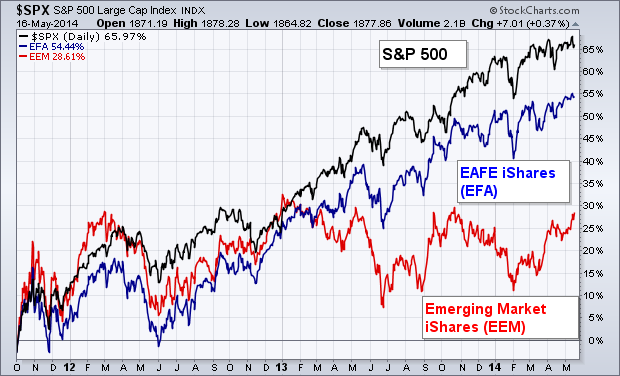While U.S. stocks are starting to struggle on fears of high valuation, some money is starting to flow into foreign stocks that show better value. The chart below shows the S&P 500 doing better than foreign developed and emerging markets since the October 2011 bottom. During that time span, the S&P 500 (representing the U.S.) gained 65% versus a 54% gain in the EAFE Index (representing developed markets in Europe, Australasia and the Far East). The worst performer by far have been Emerging Market iShares which gained only 28%. Given the historic tendencies for global stocks to be more highly correlated, the unusual disparity between global markets is likely to correct itself. That process may have already started. During the first four and half months of 2014, emerging markets have been the strongest performers and the U.S. the weakest. The EEM has gained 2.7% versus 2% for the EAFA and 1.6% for the SPX. Expectations for more aggressive easing in the eurozone (which might eventually include quantitative easing) should provide a tailwind for European equities -- at the same time that the Fed is winding down its bond buying program. My main interest today, however, is emerging markets. Not only are they starting to show better relative performance, but their chart patterns look more promising.
Take care,
John
(P.S. Click here for a bonus article from John from last Wednesday.)

